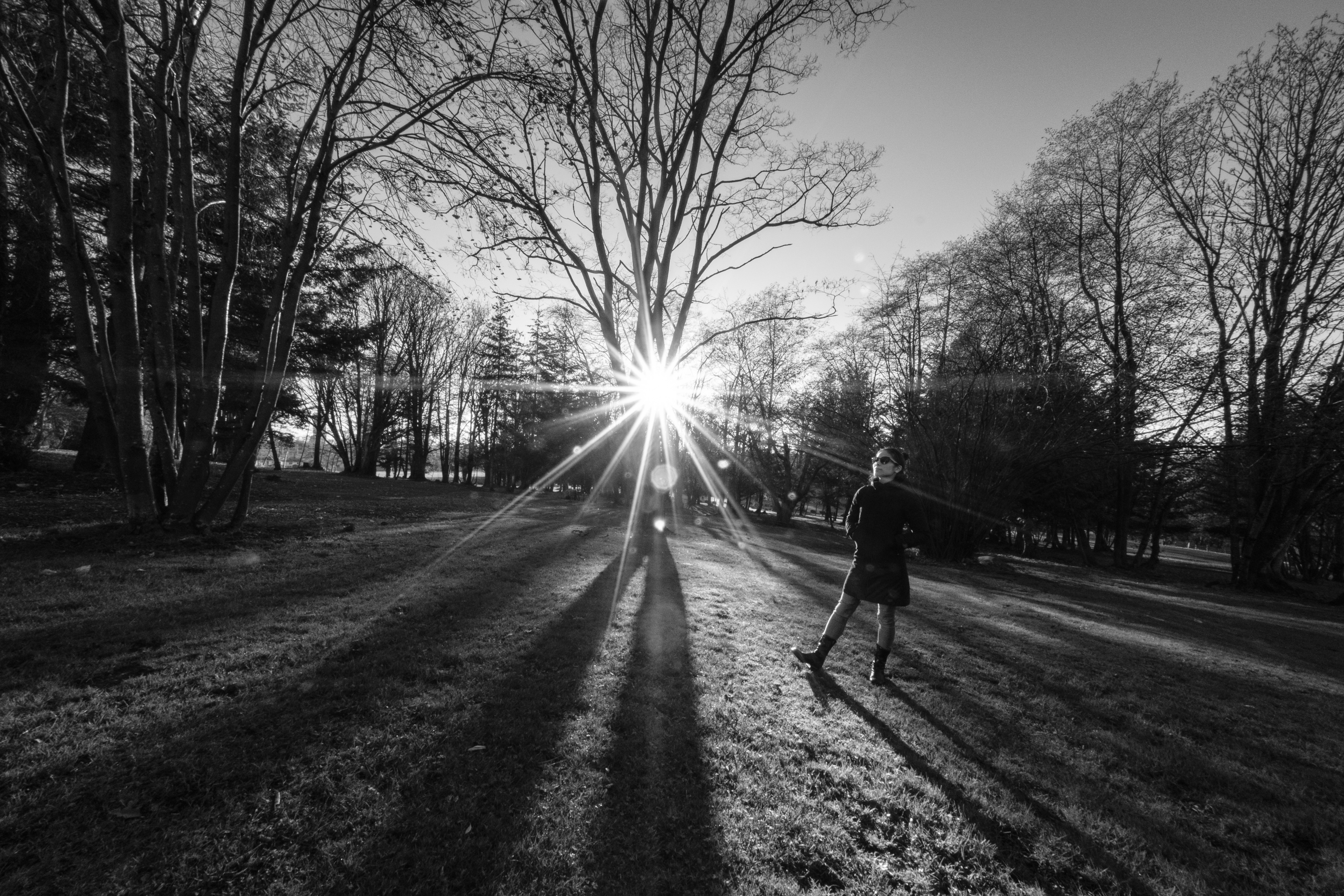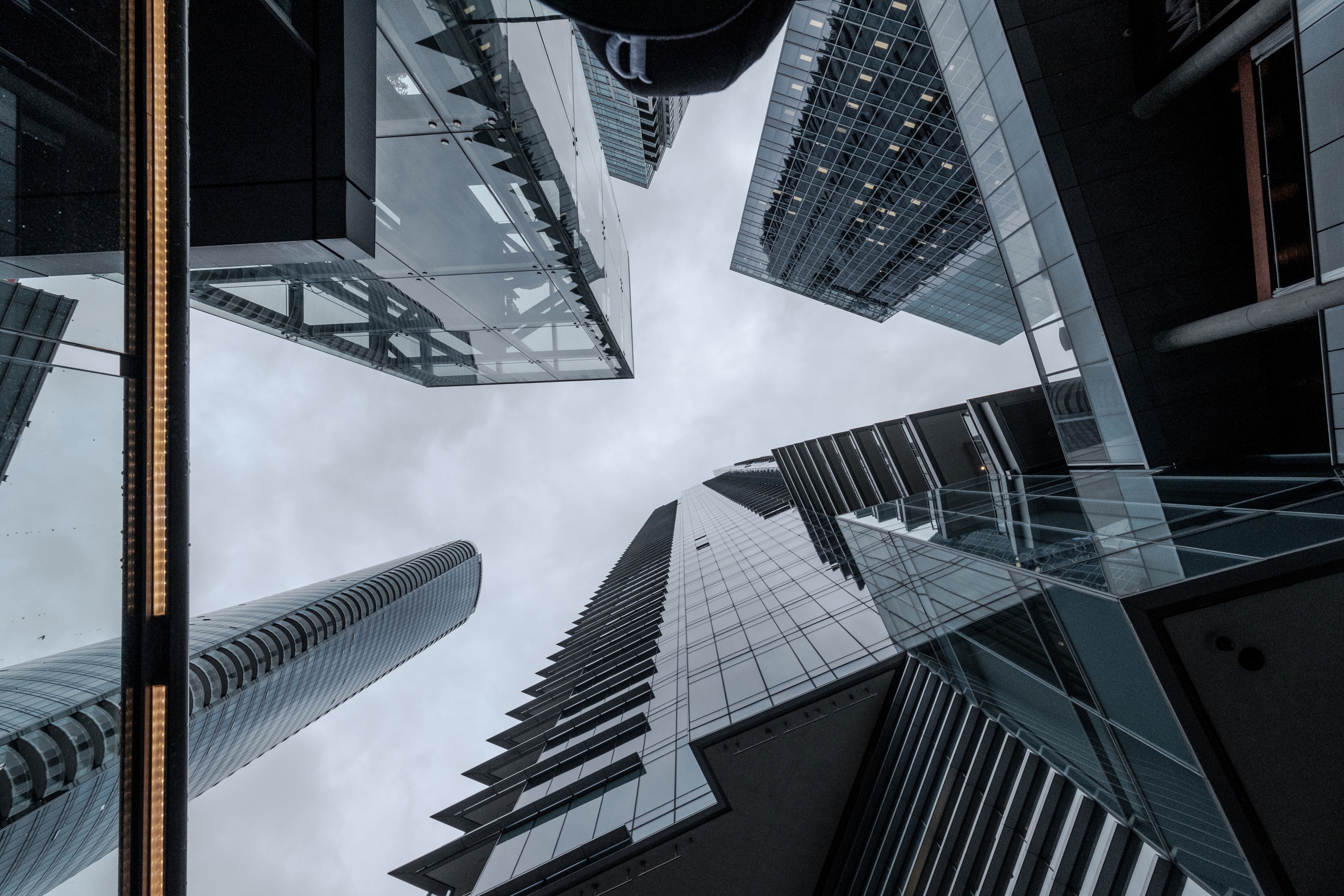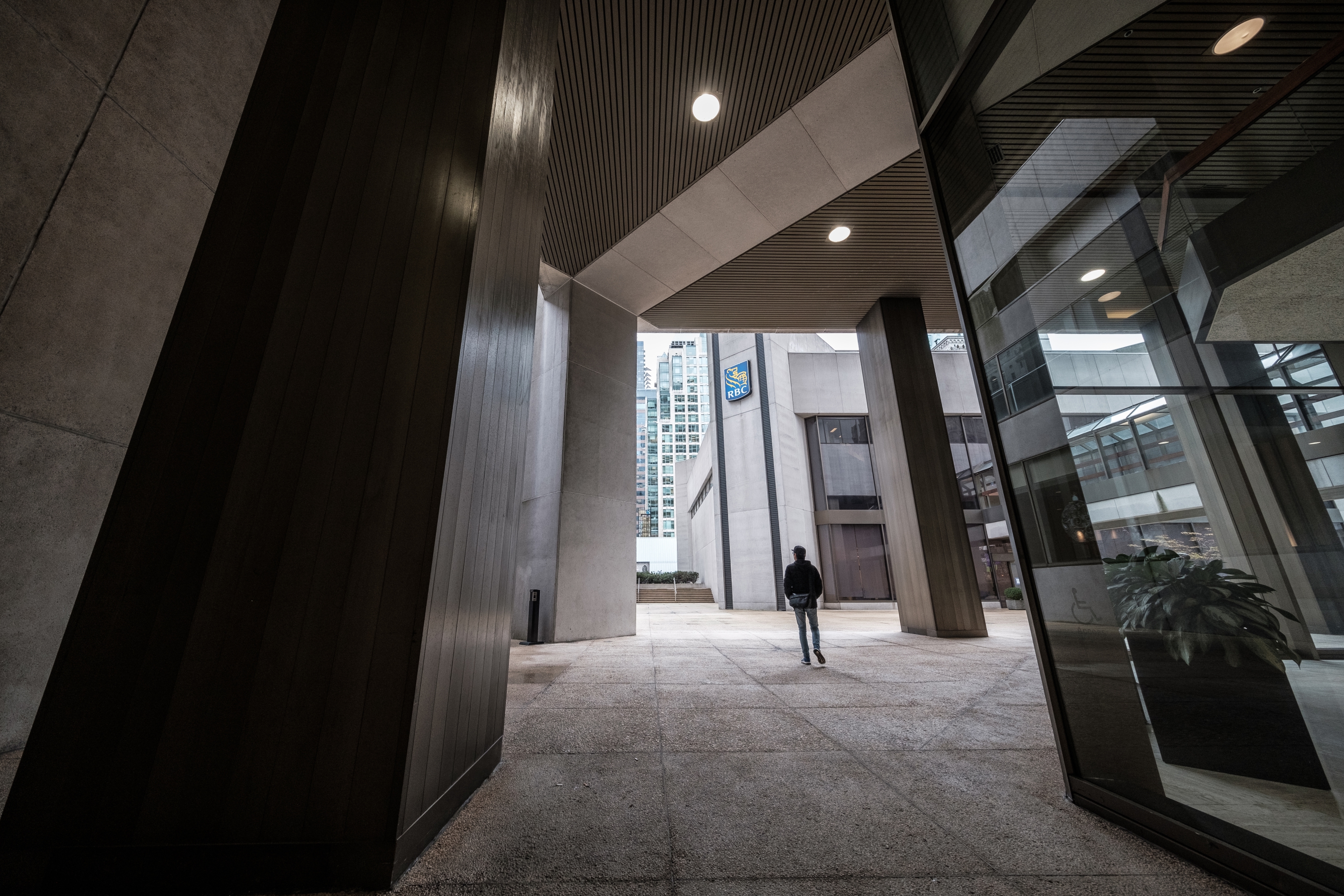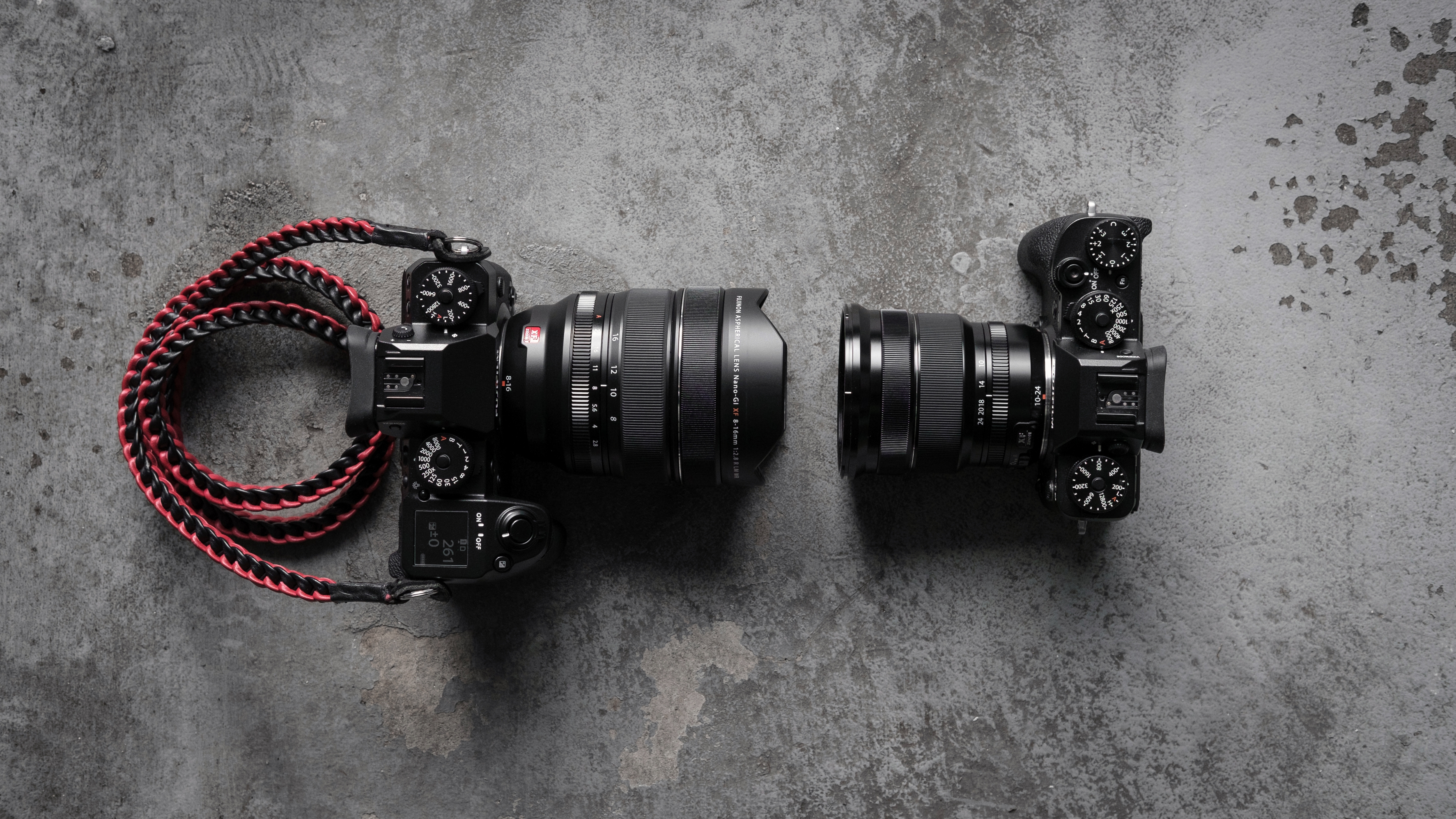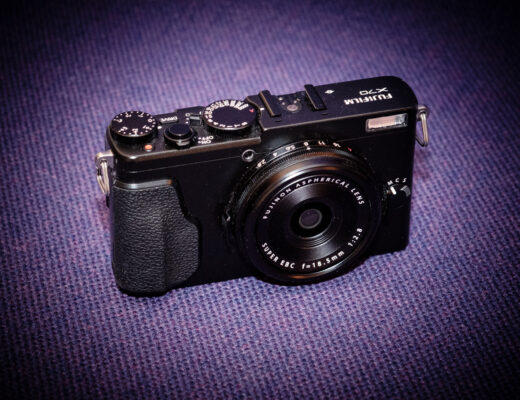How wide is too wide? It really depends on your photography and video needs. My favourite X Series zoom lens has been the trusty XF10-24mmF4 R OIS for the past few years. I’ve travelled all over the world with it and, although not weather-resistant, it can handle a lot of abuse. The XF10-24mm is compact, it has O.I.S., and it’s perfect for architectural, street and vlogging. When I first heard rumour about the red label XF8-16mmm lens, I got pretty excited. How much will the extra 2mm width and one extra stop of speed affect my ability to get the perfect shot? I knew there would be a size and weight trade-off for the improved specs and build quality, but would it be worth it? Let’s find out.
The first thing to remember about the XF8-16mm is that the lens hood is built-in and is not removable. Because of this ‘feature’, there is a sturdy custom lens cap designed specifically for this lens. The negative of this design is that there is no front filter thread. Many photographers and videographers depend on filters (polarizers, ND, graduated ND, etc.), so unless 3rd party manufacturers figure out a workaround, you’ll have to be creative to resolve this problem. While zooming, the inner portion of the lens does move in and out about half an inch, but since it’s WR I wouldn’t worry about dust or moisture getting inside the lens barrel. In fact, the overall build quality is worthy of the red label designation. Although the XF10-24mm doesn’t feel cheap, the XF8-16mm lens takes it to the next level. This is definitely designed for working pros who need the extra ruggedness.
Optically, this is very exotic and complicated in design and build. 20 elements in 13 groups, including four aspherical, three ED, three super ED, and Nano-GI coating on the first two elements to reduce ghosting and flare. Internal focus via linear motors allows for quick and smooth autofocus, and the constant f/2.8 aperture is complemented with a smooth nine-blade aperture opening. All this chocolatey goodness weighs in at 805g (1.77 lbs) and almost $2,000USD. That’s almost twice the weight and 2.5 times the price of the XF10-24mm lens, for a one-stop difference in speed and a slight advantage at the wide end of the zoom. Of course you get WR with the XF8-16mm, but the XF10-24mm has OIS, which is more useful to me. In fact, because of the lack of OIS, I shot with the XF8-16mm lens exclusively on the X-H1 body. I know some will say that with an ultra-wide zoom lens you don’t need OIS, but I think that really depends what you’re shooting and at what aperture and ISO you are at. A few times I was shooting at 1/20th sec or slower so OIS would have been helpful. However, I understand OIS would have made this lens larger and heavier, although I would have been content with an f/4 constant but with OIS.
In terms of IQ this lens is fantastic. When shooting under ideal situations, this lens has beautiful sharpness and contrast, and the optical distortion is well-corrected via lens design and software. Just beware that this lens suffers when you shoot directly into the sun. You have to expect loss of contrast and lots of internal lens flare as light bounces off the 20 elements inside this huge lens. To control the lack of contrast you have to stop down as much as you can, but then you start getting lots of weird flare and ghosting. However, this isn’t a flaw in design, it’s just the limits of a lens that’s ultra wide and complicated in design and construction.
This is an ultra-wide zoom lens so, although optically corrected, perspective distortion will still occur. You’re bending in a lot of light along the edges to get such a wide field of view. If anyone or anything is along the edges of the frame, you’re going to get perspective distortion. This lens isn’t impossible to shoot people, but you do have to be aware of how this lens behaves across the field. To avoid distortion of your subjects, put them as close to the centre of the frame as possible and allow the perspective distortion to take over. You can get some pretty crazy looking portraits and exaggerated separation between your subject and background-foreground. This lens isn’t just about how wide you can go, but how close you can get and then distort the distance between the various elements within the frame.
My favourite thing to do with ultra-wide lenses is to shoot up at buildings while juxtaposing them against a person or object. This lens is so wide that often my head would accidentally get into the frame. The best way to shoot straight up is to drop the camera as low as possible while using the Remote Camera app and use the smartphone to trigger the shutter. This is where I enjoyed using the XF8-16mm over the XF10-24mm. Although there is only a 2mm angle of view difference, it was noticeable. In fact, I rarely used the XF8-16mm at any other focal length except 8mm, since all the other focal lengths are available on the XF10-24mm. Even so, I don’t think I would ever consider an 8mm prime lens so Fujifilm did make the right decision to make this an ultra-wide zoom lens.
In conclusion, would I consider buying the XF8-16mm? Would it replace my beloved XF10-24mm zoom lens for both video and stills? No. The XF8-16mm cannot and will not replace the versatility of the XF10-24mm for my purposes. I need a front filter thread for my video work, and I want OIS so that I can work without a tripod. I also don’t think I can handle the size and weight as my primary ultra wide zoom lens while I travel. However, on a specific project that called for ultra wide photography, I would definitely rent or borrow this lens. For example, if I was going to Hong Kong and was going to photograph some buildings, I would definitely try using this lens. For architectural and landscape photography I think this lens is amazing, and if ultra wide focal lengths is something you shoot with often, consider the higher specification and more focused XF8-16mm versus the competent but lower spec’d XF10-24mm. If having stabilisation is important, currently the only way to do so is utilising the IBIS in the X-H1. Thanks for reading and happy shooting.




